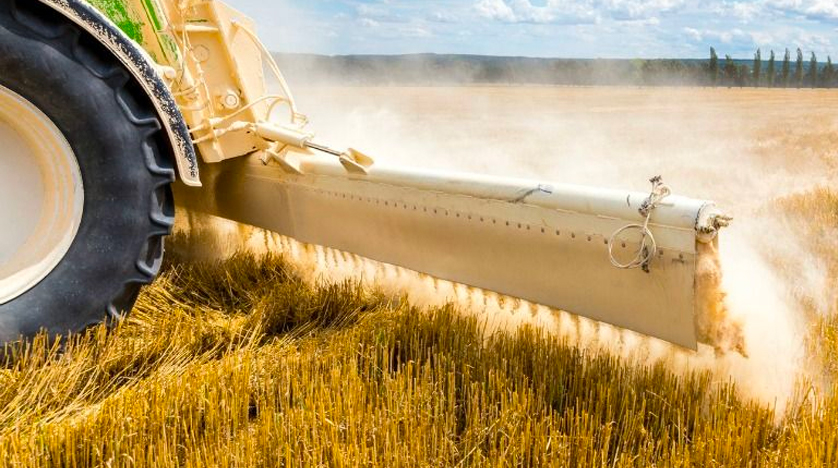
Posted August 6, 2014
Category(s) Industry News Materials

Agriculturists from as far back as the Roman Empire recognized that finely ground lime actually had the effect of improving their crops. What they may not have realized, though, is why this is the case.
Today we know that after years of tilling, crop growth, and exposure to rain, soil can become acidic in nature, and depleted of its nutrients. Aglime helps to counteract these problems.
As it dissolves, the material helps to raise the pH of soil back to normal levels, and it introduces important plant nutrients back into the earth.
While many people are aware of the positive effects of aglime, we often receive questions about this particular material. Growers are confused about when the best time to introduce agricultural lime into their fields actually is. After all, how long will it take for the material to start working?
Individuals are also eager to learn the best methods for applying agricultural lime. Fortunately, after decades of experience in the industry, we’ve got the answers that you’re looking for. We’ll cover the basics of applying aglime so that you and your crops can see the largest benefit.
In order for you to get the full benefit of agricultural lime, you first need to know when it’s best to apply it to your soil. Lime tends to dissolve quite slowly and requires water to do so. As a result, it will typically take as long as a year for a significant response to be measured (although a response can be observed and detected within weeks in cases where the soil is extremely acidic).
Keeping that in mind, it’s in your best interest to apply aglime immediately following the growing season and crop removal. This will allow ample time for the lime to react and create balance in the soil’s pH levels before the next growing season arrives.
After the initial application, you should be aware of how much time should pass before you introduce agricultural lime into your soil once again. Soil that has a low CEC level won’t need a lot of lime in order to raise the soil’s pH but may need more frequent applications.
Conversely, soil with a higher CEC level will need to have a large amount of aglime introduced to it initially, but may benefit from the application for as many as 2 years. Keep in mind, too that the amount of tillage will impact liming frequency. Fields with frequent till passes will cause the lime to be continuously spread and benefit the soil, whereas low or no-till fields may need to apply small amounts lime more frequently in order to maintain pH levels.
First, you need to consider the fact that there are different types of liming materials. As a rule, the agricultural lime that has a higher calcium carbonate equivalent (CCE) will neutralize soil acidity more quickly. Additionally, the coarseness of the material makes a difference. The finer the liming material, the faster the reactivity.
Whenever possible, aglime should be tilled into the soil. This allows for a larger portion of its surface area to be exposed into the soil, resulting in faster reactivity. In circumstances when areas like a perennial pasture must be treated, you may require a surface treatment. Stick with the method of applying less agricultural lime more frequently.
Remember, different crops require different amounts of aglime. For wheat and bermudagrass, the soil pH must be raised above 5.5, so a half ton (25% of the soil test deficiency amount needed to bring the soil up to a pH of 6.8) is ideal. In the case of legumes, soil pH must be brought up to 6.8.
For surface liming, up to 2.5 tons can be applied per acre per year, with up to 4 tons for tilled soil. If you’re unsure of how much agricultural lime to utilize, talk to a local professional.
Every farmer, gardener, or grower should have the ability to take advantage of all that aglime has to offer. At Braen Stone, we take pride in our ability to work with our customers and to answer any questions that they may have about the material.
We produce aglime from our own limestone quarry in NJ, so we’re familiar with the composition and makeup of the materials that we sell, and are more than happy to keep you informed. We have a large supply of agricultural lime that’s available at wholesale prices for pickup or delivery throughout most NJ, NY and Eastern PA.
VIBRATION CONCERNS SUPPORT NUMBER
973-720-7094
Thank you! Your form was submitted successfully.
There has been an error submitting your form.